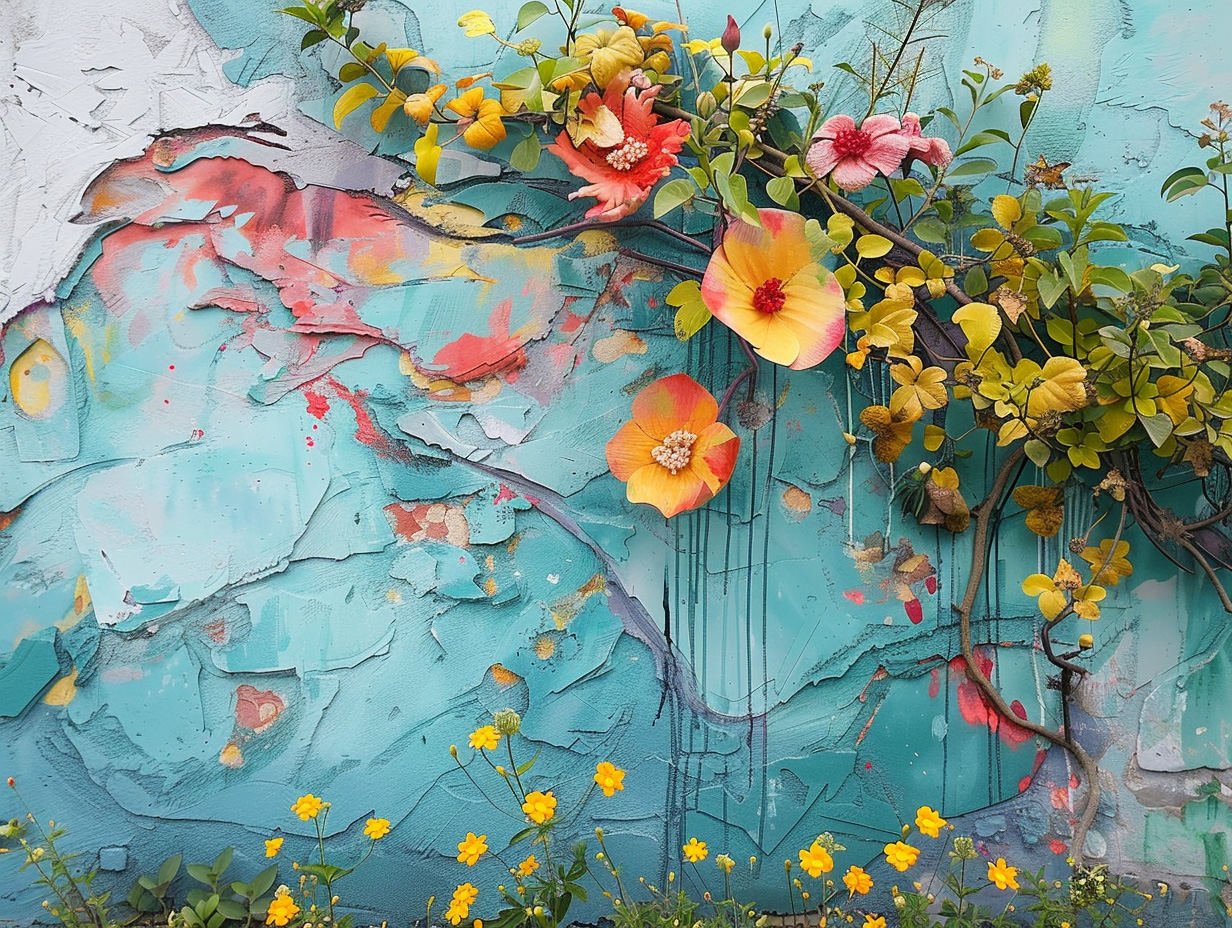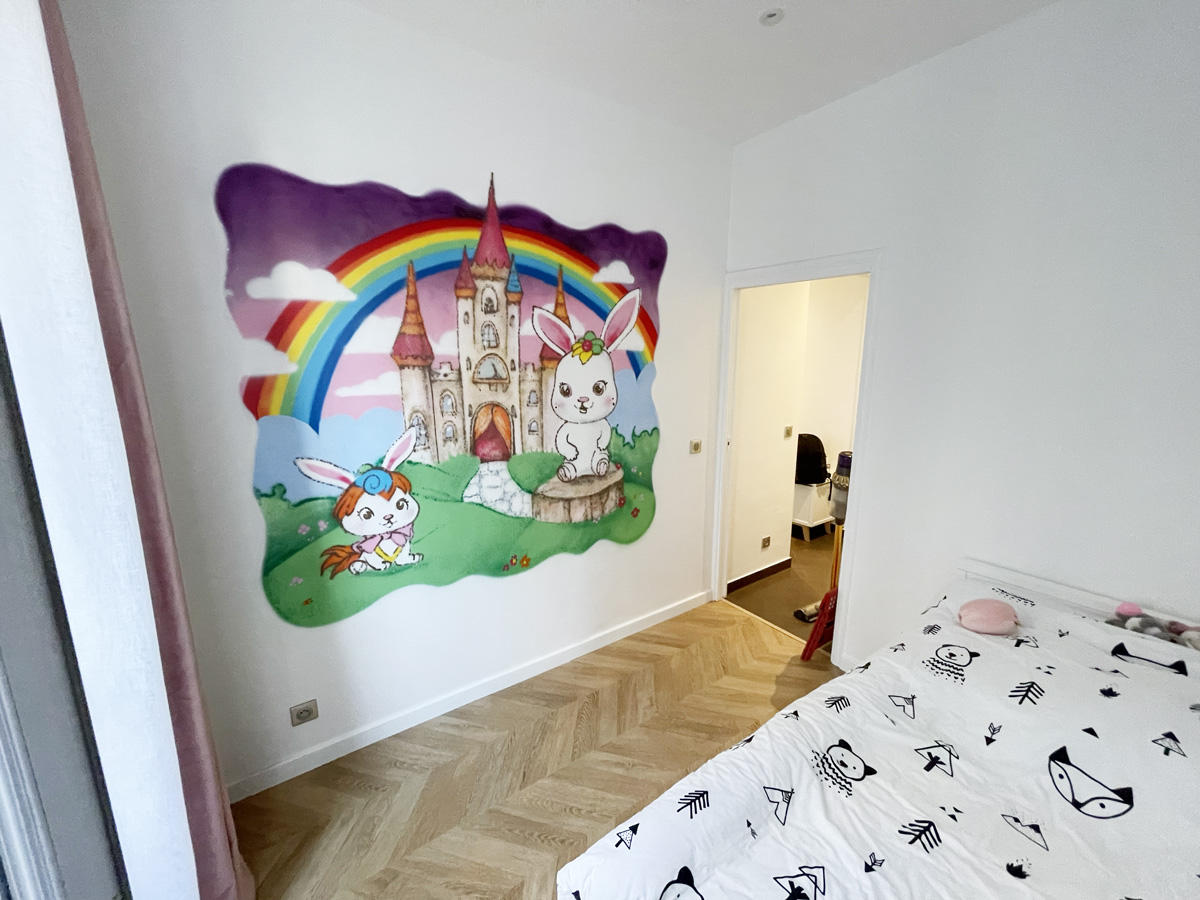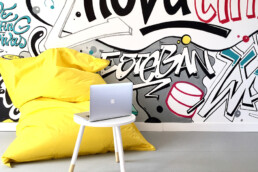Amidst the vibrant strokes of artistic flair lies a crucial aspect often overlooked – safety. Imagine a world where your living space is not just visually stunning but also free from harmful toxins and fumes, where creativity harmonizes seamlessly with well-being. This blog post delves deep into the realm of indoor graffiti safety, unraveling a spectrum of considerations from paint selection to ventilation techniques that are essential for creating not just art, but safe havens of self-expression. As you embark on your indoor graffiti journey, navigating through a myriad of hues and textures, the significance of selecting non-toxic paints resonates at the core of your artistic endeavors. The canvas of your home deserves paints that not only speak volumes through their vivid pigments but also prioritize the health and well-being of your loved ones. Beyond the strokes of creativity, lies a realm where child-safe murals and health considerations converge, shaping a sanctuary where art and safety coexist harmoniously. Join us on a quest to explore the intricate tapestry of safe art practices, where every brushstroke whispers tales of mindful creation and a sanctuary where creativity thrives in tandem with well-being.
 Ventilation Strategies to Minimize Indoor Air Pollution
Ventilation Strategies to Minimize Indoor Air Pollution
When it comes to indoor graffiti, proper ventilation is key to minimizing indoor air pollution. The fumes and odors released during the painting process can have harmful effects on your health if not properly managed. To ensure a safe environment, consider implementing the following ventilation strategies:
1. Open Windows and Doors: One of the simplest ways to improve air circulation is by opening windows and doors. This allows fresh air to enter the space and helps disperse any fumes or toxins that may be present.
2. Use Fans: Placing fans strategically around the area can help improve airflow and prevent stagnant air from accumulating. Positioning fans near windows or doors can also help draw in fresh air from outside.
3. Install Ventilation Systems: If you frequently engage in indoor graffiti or other art projects, it may be worth investing in a ventilation system specifically designed for this purpose. These systems help remove pollutants from the air, ensuring a healthier environment.
4. Portable Air Purifiers: Another option is to use portable air purifiers equipped with activated carbon filters. These filters are effective at capturing and neutralizing volatile organic compounds (VOCs) commonly found in paint fumes.
By implementing these ventilation strategies, you can minimize the impact of indoor air pollution during your graffiti projects, creating a safer environment for both yourself and others.
Understanding the Importance of Non-Toxic Paints
The choice of paint plays a crucial role in ensuring indoor graffiti safety. Opting for non-toxic paints not only protects your health but also contributes to a more sustainable environment. Here’s why non-toxic paints are essential:
1. Health Considerations: Traditional paints often contain harmful chemicals such as volatile organic compounds (VOCs) and heavy metals. These substances can release toxic fumes, leading to respiratory issues, allergies, and other health problems. Non-toxic paints, on the other hand, are formulated without these harmful ingredients, making them safer for both artists and occupants of the space.
2. Environmental Impact: Non-toxic paints are typically water-based and have lower levels of VOCs compared to their conventional counterparts. This means they have a reduced impact on air quality and contribute less to outdoor pollution.
3. Longevity: Non-toxic paints are designed to be durable and long-lasting. They adhere well to surfaces and resist fading or chipping over time. By choosing non-toxic paints, you can ensure that your indoor graffiti remains vibrant and intact for years to come.
When selecting paint for your indoor graffiti projects, look for labels that indicate low or zero VOC content. This ensures that you are using paints that prioritize both your health and the environment.
 Implementing Safety Measures for Children and Pets
Implementing Safety Measures for Children and Pets
If you have children or pets in your home, it’s important to take additional safety measures when engaging in indoor graffiti. Here are some tips to create a safe environment:
1. Choose Child-Safe Paints: Opt for paints specifically labeled as child-safe or non-toxic. These paints are formulated without harmful chemicals that could pose a risk to young children if ingested or inhaled.
2. Secure the Area: Create a designated space for your indoor graffiti activities where children and pets cannot access unsupervised. Use baby gates or barriers if necessary to prevent them from entering the area.
3. Store Materials Safely: Keep all art supplies out of reach of children and pets when not in use. Store paints, brushes, and other materials in locked cabinets or high shelves to prevent accidental ingestion or exposure.
4. Supervise the Process: Always supervise children and pets when they are near the graffiti area. Ensure they do not touch wet paint or any potentially hazardous materials.
By implementing these safety measures, you can create a space where both creativity and the well-being of your loved ones are protected.
Creating a Safe Indoor Graffiti Environment: Best Practices and Tips
Creating a safe indoor graffiti environment involves more than just selecting non-toxic paints and ensuring proper ventilation. Here are some additional best practices and tips to consider:
1. Protective Gear: Wear appropriate protective gear such as gloves, goggles, and masks when working with paints, especially if you have sensitivities or allergies.
2. Surface Preparation: Properly prepare the surface before applying paint to ensure good adhesion. Clean the area thoroughly and remove any dust or debris that could affect the quality of your artwork.
3. Test Colors: Before committing to a large-scale graffiti project, test colors on a small inconspicuous area to ensure they adhere well and achieve the desired effect.
4. Maintenance: Regularly inspect your indoor graffiti for any signs of deterioration or damage. Touch up areas as needed to maintain its appearance and prevent potential hazards.
By following these best practices, you can create an indoor graffiti environment that not only showcases your artistic talents but also prioritizes safety and longevity.
 Importance of Selecting Non-Toxic Paints
Importance of Selecting Non-Toxic Paints
The importance of selecting non-toxic paints cannot be overstated when it comes to indoor graffiti safety. By choosing paints that are free from harmful chemicals, you not only protect yourself but also contribute to a healthier living space for everyone involved. Non-toxic paints offer the following benefits:
1. Health and Well-being: Non-toxic paints minimize the risk of respiratory issues, allergies, and other health problems associated with exposure to toxic fumes. They create a safer environment for both artists and occupants of the space.
2. Environmental Responsibility: By opting for non-toxic paints, you reduce your impact on the environment. These paints have lower levels of VOCs and are less harmful to air quality and outdoor ecosystems.
3. Quality and Durability: Non-toxic paints are formulated to provide excellent coverage, color retention, and durability. They ensure that your indoor graffiti remains vibrant and intact over time.
When selecting non-toxic paints, look for certifications such as Green Seal or Greenguard that guarantee their safety and environmental friendliness. By making conscious choices in paint selection, you can create indoor graffiti that not only captivates but also promotes a healthier way of living.
Related Posts
6 novembre 2023
Dubai Wall Decor: Your Guide to Quick and Professional Indoor Graffiti
Seeking quick and professional wall…
4 novembre 2023
The Impact of Graffiti Art in Dubai’s Business Environment
Discover how graffiti art is…


